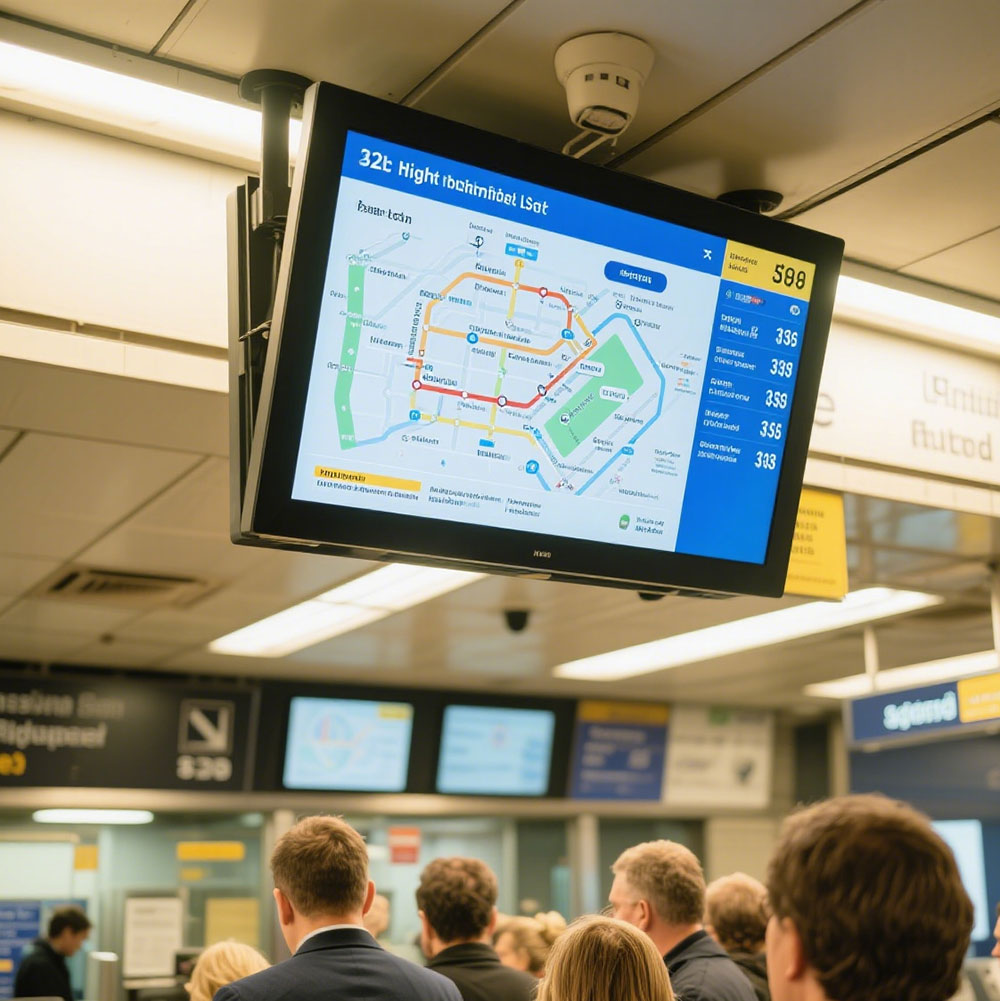In today’s increasingly connected world, the demand for reliable outdoor displays is rising—especially in industries like transportation, defense, healthcare, and retail. A key challenge in these environments is ensuring that display content remains legible under intense sunlight. This is where sunlight-readable high-brightness LCD screens become essential. These displays are engineered to deliver exceptional clarity even in direct sunlight, making them indispensable for applications such as kiosks, vehicle dashboards, military equipment, and public information systems.
The core of a sunlight-readable LCD lies in its ability to produce high peak brightness—typically 5,000 nits or more—far exceeding standard indoor displays (which usually max out at 300–500 nits). This is achieved through advanced backlighting technologies such as LED arrays with optimized diffusion layers, combined with anti-glare coatings and polarized filters. According to ISO 9241-302, outdoor visibility standards require displays to maintain readability at ambient light levels up to 100,000 lux—conditions commonly found during midday sun exposure.
Moreover, modern designs incorporate adaptive brightness control systems that dynamically adjust screen luminance based on ambient light sensors. This not only enhances visibility but also improves power efficiency—a critical factor for battery-powered devices used in remote locations. For example, industrial-grade LCDs from manufacturers like LG Display and Sharp use local dimming zones to boost contrast ratios while minimizing power consumption.
Another crucial element is the use of high-contrast materials and surface treatments. Anti-reflective (AR) coatings reduce specular reflection by over 90%, allowing users to read text and graphics without squinting. Additionally, some models integrate transmissive liquid crystal technology with wide viewing angles (up to 178°), ensuring consistent image quality regardless of observer position—an important feature for public-facing signage.

Manufacturers must also consider environmental resilience. Sunlight-readable displays often meet IP65 or higher ingress protection ratings to resist dust, water, and extreme temperatures (-30°C to +70°C). In military applications, MIL-STD-810G compliance ensures rugged performance under shock, vibration, and humidity extremes.
In conclusion, designing sunlight-readable high-brightness LCD screens requires a multidisciplinary approach involving optics, thermal management, material science, and user-centered engineering. As outdoor digital experiences become more prevalent—from smart city infrastructure to mobile field operations—these displays will continue to evolve, driven by innovations in micro-LED backlights, AI-based brightness optimization, and sustainable manufacturing practices.








